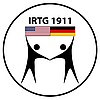A1 (2019 - 2022) - The role of C5aR1 in the regulation of innate lymphoid cell activity
The prevalence of allergic diseases, such as allergic asthma, has continued to rise in developed nations in recent decades. The main form of allergic asthma is characterized by a strong eosinophilia. Eosinophilic asthma is driven by the secretion of Interleukin (IL)-5 by T helper (Th)2 cells in the established form of the disease while it is associated with the type-2 innate lymphoid cells (ILC2) during the sensitization phase (Jonckheer et al., 2018). This ILC2 dependent eosinophilia has been shown to be dependent on alarmins, in particular IL-33. In contrast, to the pathogenic role of Th2 responses in allergic asthma, they have been suggested to play a developmentally important role in perinatal lung development (alveologenesis) (de Kleeret al., 2016; Saluzzoet al., 2016). In particular, IL-33 produced in the neonatal lung promotes ILC2 activation, and recruitment of abundant eosinophils, which are believed to contribute to homeostatic lung remodeling. Recently, the anaphylatoxin receptor, (ATR) C3aR, has been shown to play a key role in in ILC2 functions during allergic asthma development and severity (Gour et al.,2018). While the closely related ATR, C5aR1, is an important functional regulator of dendritic cells (Köhl et al., 2006; Lajoie et al., 2010; Schmudde et al., 2013; Engelke et al., 2014), and vacuolated eosinophils (Wiese et al., submitted) the function of C5aR1 in ILC2-driven responses has not yet been investigated.
Aims:
1. To determine if impacts of C5aR1 deficiency on ILC2 functions is direct, through expression of C5aR1 on ILC2 precursors
2. To determine whether the impact of C5aR1 deficiency on ILC2 functions is indirect, through influences on moDC/ILC2 interactions.
3. To determine, if the recruitment of vEOS in the developing lung is altered by C5aR1 deficiency.
Principal Investigators


Students




